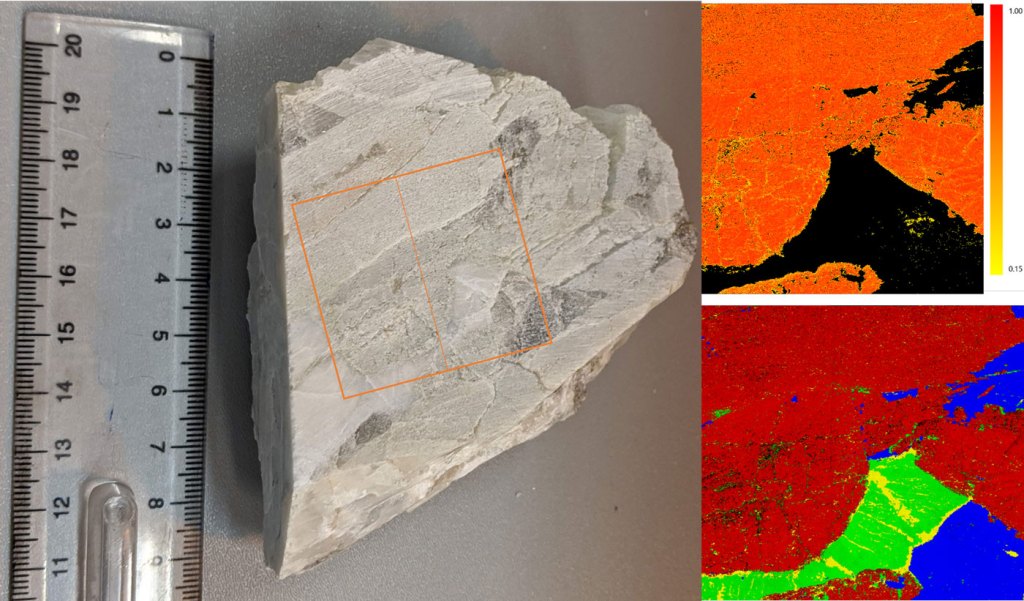LIBS for Geological Materials – Laser Induced Breakdown Spectroscopy
LIBS has a proven track record with the anlaysis of geological materials, even having been used by NASA on the Mars Rover Curiosity (ChemCam).
How Does LIBS Work?
A pulsed laser is focused on the surface of a sample. The energy from the focused laser produces a small plasma cloud consisting of highly excited atoms and ions. As these excited entities return to their ground state, they emit (photons) light.
This emitted light is analysed by an optical spectrometer which measures the intensities and wavelengths. Every element has a unique combination of spectral peaks and these are used to determine the composition of each spot analysed. The proportions of these elements helps determine the mineralogical composition.

LIBS for Automated Mineralogy
Using a database of typical spectra, each spot measured by LIBS can be related back to a single mineralogical phase. By shooting a large number of spots, mapping or microanalysis of the sample can be performed, revealing mineral distributions and concentrations. The image below compares LIBS analysis to analysis via Scanning Electron Microscopy and Energy Dispersive Spectroscopy (SEM/EDS), a well-accepted automated mineralogy technique.
As can be seen, the mineralogical analyses are very similar. However, the LIBS analysis can be completed in a fraction of the time. Furthermore, it is also possible to measure as-received samples, using LIBS, resulting in further workflow efficiencies.
Advantages of LIBS
LIBS produces elemental data similar to XRF but with from smaller spot sizes enabling mapping of geological materials such as drill core with high degrees of accuracy. Most importantly, LIBS is suitable for every element in the periodic table, making it the superior solution for those involved in lithium exploration and mining.
Other key advantage of LIBS include:
- Very fast
- Little to no sample preparation require e.g. no sample digestion
- Does not require flat sample surface
Further Reading
| ECORE: A New Fast Automated Quantitative Mineral and Elemental Core Scanner Marie-Chloé Michaud Paradis, François R. Doucet, Kheireddine Rifai, Lütfü Ç. Özcan, Nawfel Azami and François Vidal Minerals 11 [8], 859. August 2021. |
| Emergences of New Technology for Ultrafast Automated Mineral Phase Identification and Quantitative Analysis Using the CORIOSITY Laser-Induced Breakdown Spectroscopy (LIBS) System Kheireddine Rifai, Marie-Chloé Michaud Paradis, Zofia Swierczek, François Doucet, Lütfü Özcan, Alejandro Fayad, Jing Li and François Vidal Minerals 10 [10], 918, September 2020. |
| Ultrafast Elemental Mapping of Platinum Group Elements and Mineral Identification in Platinum-Palladium Ore Using Laser Induced Breakdown Spectroscopy Kheireddine Rifai, Lütfü-Çelebi Özcan, François R. Doucet, Kyle Rhoderick andFrançois Vidal Minerals 10 [3] 207, February 2020. |
| LIBS Core Imaging at kHz Speed: Paving the Way for Real-time Geochemical Applications Kheireddine Rifai, François Doucet, Lütfü Özcan and François Vidal Spectrochemica Acta Part B: Atpomic Spectroscopy 150, 43-48, December 2018. |


